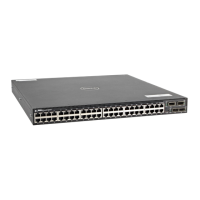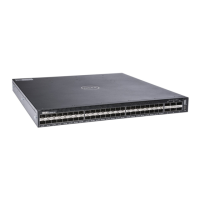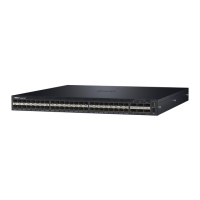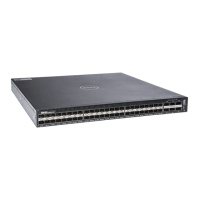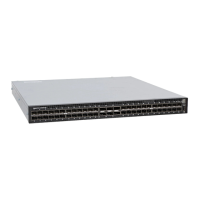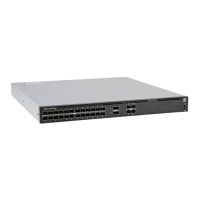Install the S4810 | 31
Hot-Swap Units in a Stack
You can add, remove, or swap S4810 units in an existing stack. The units in the stack and the new units
can be already powered up or powered down.
All units in a stack must run the same version of the operating system. If you attempt to attach a unit with
a different version of the operating system to an existing stack, the CLI displays an error and the unit is
not added until you install compatible software.
The order in which the units come on-line or are added to or removed from the stack affects how the stack
identifies them and how the units identify themselves. This influences unit numbers, management
addresses, and other elements of the configuration file.
Unit identification within the stack is determined by the identification algorithm you select. The default
algorithm has the units self-identify as Unit 0 through Unit last based on the order in which they come
on-line. So, when setting up a new set of switches in a stack, you should have no trouble forcing the
identification of the management unit and unit IDs by methodically supplying power to the units in your
preferred sequence.
Similarly, when you add a new unit to the stack, the unit is gracefully added as Unit last (the lowest
unused number) with the current configuration. Attaching a new unit may cause each unit in the stack to
reload. The subsequent configuration file in each unit includes the awareness of the new unit.
If you have a pre-configured unit that you want to add to the stack, but you want to make sure that the
configuration does not override the configuration of the stack, add the unit while it is powered down to
avoid stack management conflicts.
For more information about removing a unit from a stack and other stacking commands, refer to the
Stacking chapter in the FTOS Configuration Guide for the S4810 System and the Stacking Commands
chapter in the FTOS Command Line Reference Guide for the S4810 System.
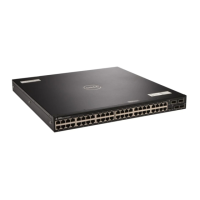
